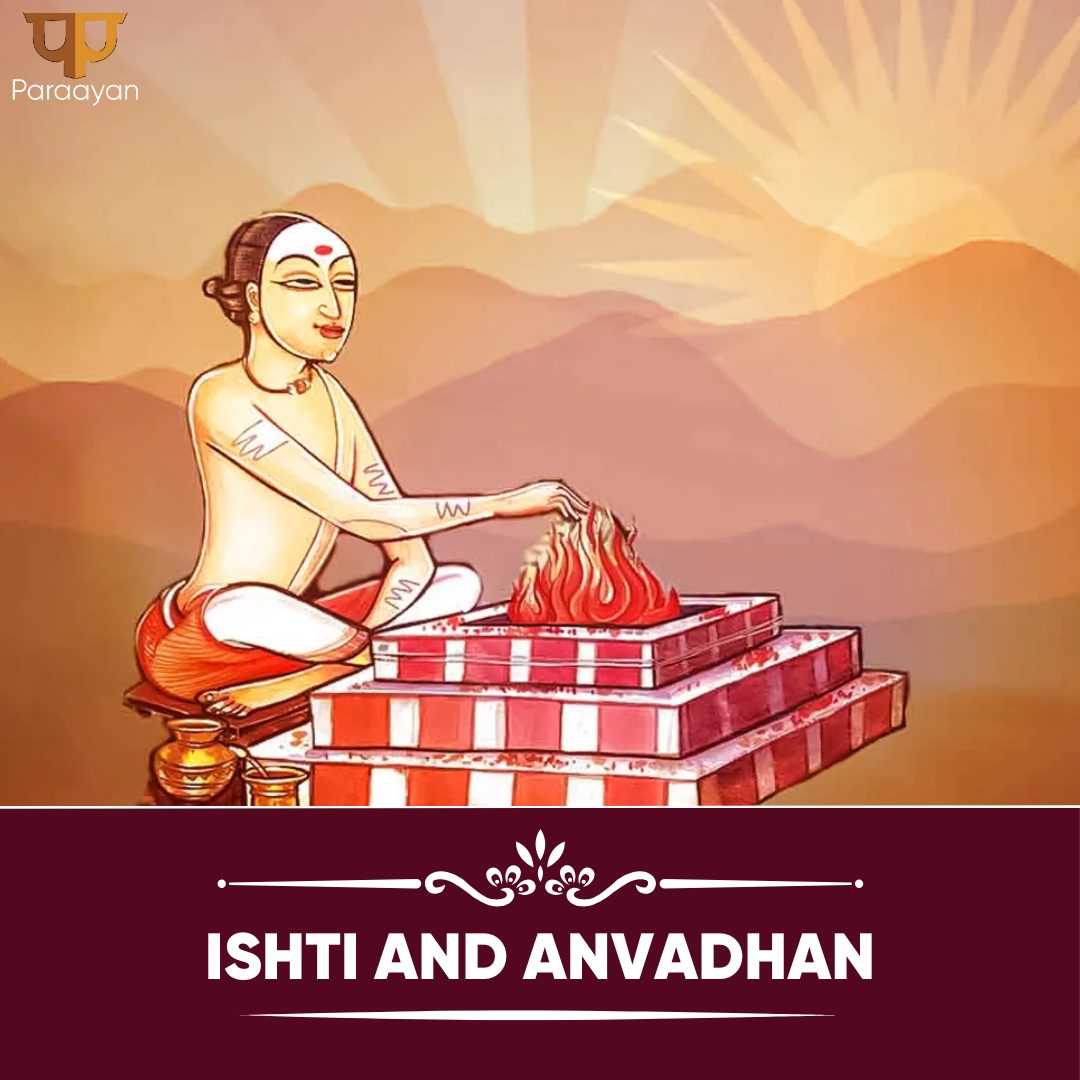Discover the reasons behind varying opinions on Ishti and Anvadhan dates, influenced by regional Panchang calculations, temple traditions, and astrological interpretations in Hindu rituals.
Important occasions in the Hindu calendar are Ishti and Anvadhan (इष्टि एवं अन्वाधान). Hindus maintain a daylong fast on the day of Anvadhan and engage in Yajna on the day of Ishti, particularly those who adhere to the Vaishnava Sampradaya. These rites are carried out with the greatest dedication and have profound spiritual meaning.
There are different opinions on observing the dates of Ishti and Anvadhan, which creates unnecessary doubts among followers. Some traditions follow regional Panchang calculations, while others adhere to specific temple guidelines. Most followers would be able to use the commonly recognised dates for Ishti and Anvadhan that Drik Panchang Panditji has supplied. By keeping to these dates, followers are guaranteed to remain consistent and precisely perform the rites as directed.
Importance of Anvadhan and Ishti
Ishti is a revered Vedic ceremony that includes mantra chanting, offerings, and fire sacrifices. It is done to ask for blessings for wealth, well-being, and spiritual development. Ghee, grains, and herbs are among the elements used as offerings in this ceremony, which is performed with the highest cleanliness. Devotees call upon the fire deity Agni to transport their petitions to heaven.
In contrast, Anvadhan shares a tight relationship with Ishti. It entails getting ready for the Yajna and making sure the supplies and holiness needed for the ceremony are preserved. In order to participate in the holy sacrifices on the day of Ishti, devotees fast rigorously on this day, purifying their bodies and minds.The fasting is believed to purify one’s karma and create positive energy.
Observance and Rituals
The observance of Ishti and Anvadhan follows a structured pattern. Devotees wake up early in the morning, take a holy bath, and engage in prayers. The fasting on Anvadhan is strict, and only water or fruits are consumed in some traditions. This fasting is seen as a means of self-discipline and devotion.
On the day of Ishti, the Yajna is performed under the guidance of learned priests. The ritual begins with the chanting of Vedic hymns, invoking the presence of divine energies. Offerings of ghee, rice, and special herbs are made into the sacred fire. Each offering is accompanied by specific mantras that enhance spiritual vibrations. The completion of the Yajna is marked by distributing Prasad, which symbolizes divine blessings.
Different Opinions on Dates
One of the major concerns among devotees is the difference in opinions regarding the exact dates for observing Ishti and Anvadhan. Some sects rely on lunar calculations, while others follow solar alignments. This discrepancy leads to confusion and, at times, uncertainty among followers.
Drik Panchang Panditji has taken various astrological and scriptural references into account to provide widely accepted dates. These dates are based on comprehensive calculations, ensuring that the rituals are performed at the most auspicious time. It is recommended that devotees adhere to these prescribed dates to maintain uniformity and avoid any misinterpretation of traditions.
Astrological and Scriptural Basis
Ishti and Anvadhan are deeply connected to the planetary positions and lunar cycles. The specific timing of these rituals ensures maximum spiritual benefits. Scriptures mention that observing these rituals during the right planetary alignments enhances their effectiveness and brings prosperity to devotees.
Astrologers and scholars use ancient texts like the Vedas and Smritis to determine the ideal time for these rituals. These calculations involve precise measurements of Tithi (lunar day), Nakshatra (constellation), and planetary influences. By adhering to these astrological guidelines, devotees align themselves with cosmic energies, ensuring spiritual progress.
Benefits of Observing Ishti and Anvadhan
Performing Ishti and Anvadhan with sincerity offers numerous benefits. The rituals are believed to purify the soul, remove past karmic debts, and bestow divine blessings. The fasting associated with Anvadhan cleanses the body and mind, promoting self-discipline and spiritual awareness.
Participating in the Yajna on Ishti enhances one’s spiritual aura and attracts positive vibrations. The fire sacrifices made during the ritual are said to create an atmosphere of peace and harmony. Devotees who observe these rituals regularly experience improved health, prosperity, and mental clarity.
Steps to Follow for Observing Ishti and Anvadhan
- Preparation: Gather all required materials, including ghee, grains, herbs, and sacred firewood.
- Fasting on Anvadhan: Observe a strict fast, consuming only water or fruits as per tradition.
- Purification: Take a holy bath and wear clean, traditional attire before performing rituals.
- Yajna on Ishti: Perform the sacred fire ritual with the guidance of a learned priest.
- Mantra Chanting: Recite Vedic mantras during the Yajna to enhance spiritual benefits.
- Offering to Fire: Make offerings of ghee, rice, and herbs to the sacred fire while chanting prescribed mantras.
- Completion and Prasad: Distribute Prasad to all participants, symbolizing divine blessings and fulfillment of the ritual.
Conclusion
Ishti and Anvadhan are integral aspects of Hindu spiritual practices. These rituals, when performed with devotion and adherence to scriptural guidelines, bring immense benefits to devotees. By following the widely accepted dates provided by Drik Panchang Panditji, followers can observe these traditions correctly and harmoniously. The observance of these rituals strengthens one’s spiritual path, purifies the soul, and ensures divine grace in all aspects of life.





